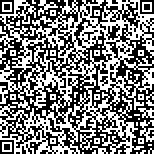| 本文已被:浏览 1615次 下载 1431次 |

码上扫一扫! |
|
|
| 松果菊苷固体脂质纳米粒的表征及体外细胞摄取评价 |
|
薛志峰1,2, 张兵1,2, 陈静1,2, 吴玉梅1,2, 卢鹏1,2, 张永苗1,2, 祁东利1,2, 刘志东1,2
|
|
1.天津中医药大学, 现代中药发现与制剂技术教育部工程中心, 天津 301617;2.天津中医药大学, 天津市现代中药重点实验室-省部共建国家重点实验室培育基地, 天津 301617
|
|
| 摘要: |
| [目的] 对本实验室前期处方优化的松果菊苷固体脂质纳米粒(ECH-SLN)的物理性质和体外细胞摄取情况进行评价,为今后眼部制剂的改进奠定基础。[方法] 根据本实验室前期优化的处方,采用乳化-固化法制备ECHSLN,运用差示扫描量热法(DSC)及X射线衍射法(XRD)表征其物理性质,并选取人角膜上皮HCEpiC细胞与人晶状体上皮SRA 01/04细胞,对罗丹明123固体脂质纳米粒(Rhodamine 123-SLN,Rh 123-SLN)进行体外细胞毒性评价及细胞摄取研究。[结果] DSC结果显示仅松果菊苷和物理混合物(空白SLN:松果菊苷=5:1)在150℃出现松果菊苷的熔化吸热特征峰,空白SLN、ECH-SLN和物理混合物在110℃和230℃均出现SLN的两个熔化吸热特征峰;XRD结果显示松果菊苷和物理混合物在20°时出现明显的松果菊苷特征峰,空白SLN,ECH-SLN和物理混合物在20°~25°范围均显示SLN的范围特征峰;结果均表明松果菊苷作为药物以分子分散状态被包裹在固体脂质纳米粒(SLN)中;细胞活力影响实验结果显示Rh 123-SLN浓度为5.13 μg/mL和10.25 μg/mL时对两种细胞均无明显毒性,与对照组相比无显著性差异;细胞摄取实验结果表明Rh 123溶液不能被细胞所摄取,而Rh 123-SLN的细胞摄取量与药物浓度和孵育时间呈正相关。[结论] ECH-SLN能够将松果菊苷递送到眼细胞,这可能为氧化性白内障的治疗提供一种有效的药物递送系统。 |
| 关键词: 松果菊苷 固体脂质纳米粒 人角膜上皮HCEpiC细胞 人晶状体上皮SRA 01/04细胞 细胞摄取 |
| DOI:10.11656/j.issn.1673-9043.2019.03.20 |
| 分类号:R285.5 |
| 基金项目:教育部新世纪优秀人才支持计划(NCET-12-1068)。 |
|
| Characterization and in-vitro cellular uptake evaluation of solid lipid nanoparticles loaded with echinacoside |
|
XUE Zhifeng1,2, ZHANG bing1,2, CHEN Jing1,2, WU Yumei1,2, LU Peng1,2, ZHANG Yongmiao1,2, QI Dongli1,2, LIU Zhidong1,2
|
|
1.Engineering Research Center of Modern Chinese Medicine Discovery and Preparation Technique, Ministry of Education, Tianjin University of Traditional Chinese Medicine, Tianjin 301617, China;2.Tianjin State Key Laboratory of Modern Chinese Medicine, Tianjin 301617, China
|
| Abstract: |
| [Objective] The physical characteristics and the cellular uptake in vitro of echinacoside solid lipid nanoparticles (ECH-SLN) optimized by our laboratory were evaluated, which laid a foundation for the improvement of eye preparations in the future. [Methods] ECH-SLN was prepared by emulsion-solidification according to the preoptimized prescription of the laboratory. The physical properties were characterized by differential scanning calorimetry (DSC) and X-ray diffractometry (XRD). Human corneal epithelial cells (HCEpiC) and human lens epithelial cells (SRA 01/04) were selected to analyze the cytotoxicity and cellular uptake of Rhodamine 123 solid lipid nanoparticles(Rh 123-SLN) in vitro. [Results] The DSC results showed that a melting endothermic characteristic peak of ECH at 150℃ was exhibited in the ECH and the physical mixture(blank SLN:ECH=5:1). And the two melting ECH characteristic peaks of SLN appeared at 110℃ and 230℃ in blank SLN, ECH-SLN and physical mixture;The XRD results indicated that a significant ECH peak at 20° was showed in the ECH and the physical mixture. And the characteristic peaks of SLN in the range of 20°~25° were emerged in the blank SLN, ECH-SLN and physical mixture;The results both indicated that ECH was encapsulated in solid lipid nanoparticles (SLN) as a drug in a molecularly dispersed state. The results of cell viability effect showed there was no significant toxicity to both cells for the Rh 123-SLN concentrations of 5.13 μg/mL and 10.25 μg/mL, which was compared with the control group. The cellular uptake experiments showed that the Rh 123 solution could not be taken up by cells, and the cell uptake of Rh 123-SLN was positively correlated with drug concentration and incubation time. [Conclusion] ECHSLN can be delivered the ECH to ocular cells, which may provide an effective drug delivery system for the treatment of oxidative cataract. |
| Key words: Echinacoside solid lipid nanoparticles HCEpiC SRA01/04 cellular uptake |
